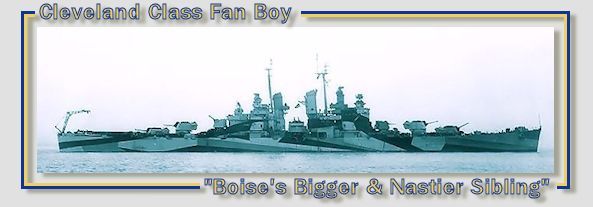goodboyladdie
Posts: 3469
Joined: 11/18/2005
From: Rendlesham, Suffolk
Status: offline

|
quote:
ORIGINAL: el cid again
quote:
ORIGINAL: goodboyladdie
Before the last game ended after almost a month I had pink in San Diego, Utah and San Francisco (50-60,000 tons in each) and was red everywhere else, ie under 7,000 tons (except New Orleans and three or four Canadian bases). I had not been too generous sending stuff out either. I was looking at trying to assemble at least 100,000 tons for a Pearl Harbor reinforcement/resupply and had to switch off HI and all the various shipyards across CONUS to try to do this. This was wrong in my opinion. I know I have been spoilt by stock and CHS and all the other mods I have played, but all the aircraft orders/plans and shipbuilding for the next 3-4 years was already planned, with necessary building/upgrades/changes of use underway. It's the one place on the map where it should not be that tight, as the creation of the Arsenal of Freedom was well underway and the US was equipped to supply in increasing volume. As it was I was looking at a very heavy investment in supply for up to three years. I did not need the supply sinks to force me to learn to manage supply/balance priorities.
The basic problem is we are not doing a clean design from scratch - and code has peculiar variations just for the US/Canadian West Coast area. In fact - it appears that land units do not move properly on the extreme map edge at all - and I have not found a workaround for this either. In supply terms - the pinkness does not have the same meaning it has in other places:
1) Normally - a location is in the pink IF it has less than twice the supplies it needs for a month
2) US West coast is in the pink if it has less than 60000 plus twice the supplies it needs for a month
That means that you can safely use the supplies. The code does this as a way to "suck" supplies out of "United States" etc.
Someone in the Forum asked for a complication - and it is a great idea - but it IS a complication: he (AK dreemer? WITPQS?) wanted supplies to grow over time. He suggested using damaged centers to make this happen. It works - BUT it is NOT automatic. I have no way to turn off anything - the player must manage it. And every time anything grows one level it eats 1000 supply points. S0 if it has a huge damaged level - 1000 or so - turn it on - and it grows for 3 years. If NOT - turn it off - and it can be turned on later when you are in the black there.
IF you follow my suggestions - this works great. Over time the supplies and fuel and HI and so on will grow to as much as 3 or 4 times initial levels. Further - the amount you "lose" paying for future growth shrinks - so late in the war you get to use almost all of it.
Note that plane and ship and unit production are NOT affected (as they would be on the other side) - these things just happen for free for the Allies. HI centers more or less matter because they make supplies and fuel - not because they make HI points - for the Allies (unless HI points are used for something). But supplies and fuel DO matter. The RHS system lets them grow - you neither must start with horribly too much - nor do you get no growth - but you do have to learn how to manage it.
One thing that matters is local production from HI centers: look at HI, resources and supply (say at Seattle). If you do NOT have TWICE the oil you do HI - there is NO production by the factories. It is the opposite in New Orleans - you will be resource short so badly that you only produce one day in three. The idea is this: IF you EXPORT resources (I want you to do that from Australia - New Zealand - New Caledonia and India - but you can do it from the US West Coast) to New Orleans you can TRIPLE local production. Similarly, if you import oil from NEI or New Orleans to US West Coast points like Seattle - you will cause local production to occur every day. This forces you to use ships for long haul transport between Australia and New Orleans - or rear area between US West coast and Gulf Coast - justifying the extra ships you got in Level 7 for exactly such cargo. YOU decide if they carry military cargo or economic cargo - or both (one in one direction - the other in the reverse direction)? But you do NOT get the production if you don't move the oil and resources where it is needed.
Note that Australia and New Zealand and India need oil - and If you send it THEY will produce from local HI plants. One player even sent oil to Manila (which starts with it in storage) - and he will NEVER lose Luzon - because it generates local resources and supplies (some of them from HI at Manila).
Note that vast amounts of supply (fuel, oil, resources) appear at the map edge - no where more than in the US West coast area (which includes New Orleans, Colon Panama, San Diego, Salt Lake City, Cagary Alberta Canada). You get thousands of them per day per location- although you don't get every one at every location. This represents off map production entering the map area. We also turned Spokane and Boise into ports - in spite of not being on water - because AI sends more to them that way - and they become useful air bases and so on. What this means is that if there is NO local production at all a vast amount of supply appears in this area: it is just not vast compared to what you need - particularly later in the war. The supply situation must be managed - and involves loading cargo every day - deciding where to turn things on or off every few days - etc. If done well you can export all the time and you will grow the economy hundreds of per cent. If done without regard for what works (sending resources to New Orleans works - sending oil to Seattle works) - you not only won't export much from several locations - you won't grow either. This is realistic. There were requirements for shipping for the US economy. And the Allies did a good job of sending ships with wholly different cargos on different legs of their voyages (Japan did badly - mostly ships went empty half the time). The Allies also did a lot of "triangle routing" - troops on one leg - resources on the next leg - and supplies or fuel on the final leg. You are allowed to do such things - greatly increasing your shipping efficiency - and resulting in more of what you need where you need it. The trade offs of this ship at that speed over that distance for such and such a cargo set - are all yours to manage.
I was doing all that Cid, and enjoying the challenge. My point is the US industrial ramp up should be smooth and you should not have to switch off and switch on. I am well aware that production is unaffected. My point in mentioning it was to emphasize that this smooth planned ramp up was going on historically. The main issue is whether CONUS supply sinks are necessary and whether the three year builds are already eating up the necessary "excess" supply. Are you hitting the Allied player in the pocket twice? My feeling from playing was that this was so. I loved the dynamism of the economic model and, as mentioned, was really enjoying the extra work/challenge, but I also felt I was paying a hidden tax.
_____________________________
 Art by the amazing Dixie
|
 Printable Version
Printable Version









 New Messages
New Messages No New Messages
No New Messages Hot Topic w/ New Messages
Hot Topic w/ New Messages Hot Topic w/o New Messages
Hot Topic w/o New Messages Locked w/ New Messages
Locked w/ New Messages Locked w/o New Messages
Locked w/o New Messages Post New Thread
Post New Thread